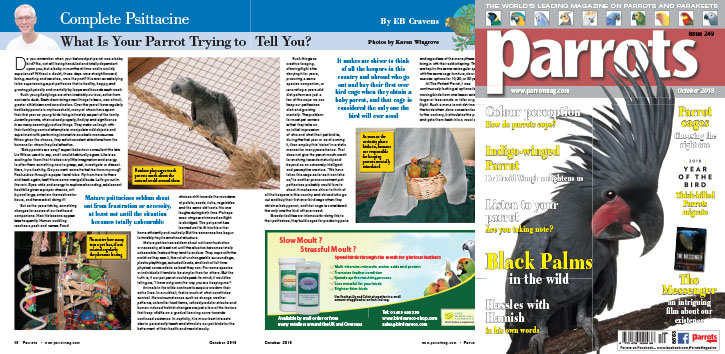
Complete Psittacine by Eb Cravens
Do you remember when your beloved pet parrot was a baby bird? No, not still being hand-fed and totally dependent upon you, but a baby in months of time and in worldly experience? Without a doubt, those days were straightforward, loving, exciting and carefree, were they not? It is ever so satisfying to be experiencing a pet psittacine that is healthy, happy, and growing physically and mentally by leaps and bounds each week.
Such young fledglings are often insatiably curious, active from sunrise to dusk. Each dawn brings new things to learn, new stimuli, greater athleticism and coordination. Over the years I have regularly had baby parrots in my household, many of whom have spent their first year as young birds living intimately as part of the family. Juvenile parrots, when raised properly, find joy and significance in so many seemingly routine things. They make us laugh with their fumbling comical attempts to manipulate odd objects and experiment with performing innovative acrobatic manoeuvres. When given the chance, they solicit constant attentions from the humans for whom they feel affection.
“Baby parrots are easy,” expert behaviour consultant the late Liz Wilson used to say, and I would habitually agree. Life is so exciting for them that it takes very little imagination and energy to offer them something new to grasp, eat, investigate or dissect. Here, try a fresh fig. Do you want some herbal tea from my mug? Peek-a-boo through a paper towel tube. Fly from here to there and back again, fast! Have some marigold buds. Let’s go out in the rain. Eyes wide and energy to explore abounding, adolescent hookbills given a proper chance, will by and large, entertain themselves for hours, and have a ball doing it!
Buy Now!
